The Shadow Of German Expressionism In Cinema
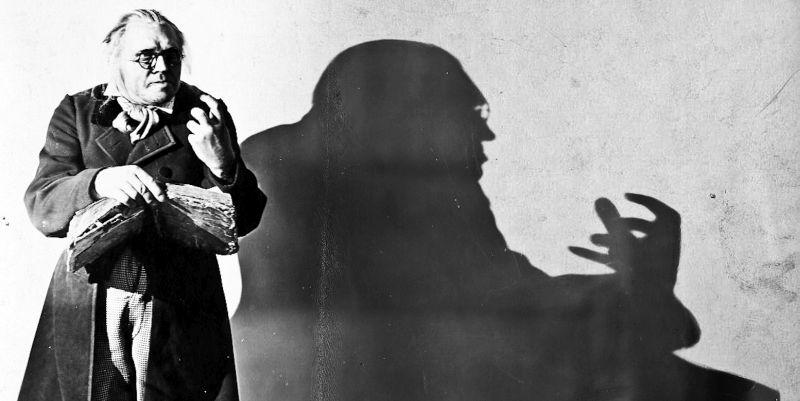
Has a soft spot for Hammer Horror films and is…
German expressionism was an art movement that began life around 1910 emerging in architecture, theatre and art. Expressionism art typically presented the world from a subjected view and thus attempted to show a distorted view of this world to evoke a mood or idea. The emotional meaning of the object is what mattered to the artist and not the physical reality. While already making waves in the art world, expressionism would really come into its own when expressed in cinema.
What is Expressionism in Cinema?
Expressionist films would use atmospheric lighting, asymmetrical camera angles and highlight many objects and characters with the use of high contrast between dark and light. The plots that featured in German expressionism were usually occupied with madness, identity of one’s self and insanity. When all these aspects were brought together the result was usually a dark film with plenty of subtext to them.
‘The Horror, The Horror’; World War One And Its Influence
The atrocities of World War One started to manifest themselves in German cinema through the horror genre. German cinema throughout the war and indeed post war was dominated by horror films, titles such as The Golem and The Golem and the Dancing Girl proved very popular with the German public. As the full extent of the war and its horrors came to light, the horror genre took an even darker turn when expressionism began to seep in.
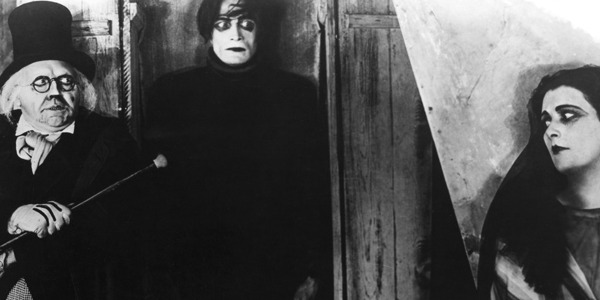
World War One left Europe in ruins, as many empires collapsed leaving its subjects to wonder what the future would hold. Defeat for Germany was devastating as the country was left in financial destitute, causing great grief for its citizens. The people of Germany began to feel resentment towards its leaders for bringing untold misery upon them. Trepidation and malaise set in on the German public with regards to their future.
Fear began to manifest itself in the expressionism art movement. After the war, expressionism found its way to the new medium of cinema, which presented artists with a chance to work with a moving canvas i.e. the screen.
Expressionism’s foray into the medium of cinema is perhaps the first film movement; Surrealist, French New Wave and Italian Neo-Realism are other notable movements that cinema experienced in the 20th century. It should be noted, that no manifesto was drawn up for expressionism unlike the French New Wave and the surrealist movement.
Expressionism In Cinema
German cinema of the 1920’s was dominated by expressionism from screenplays, to set designs, the shadow of the art movement was impossible to escape. This led to German cinema becoming one of the most exciting national cinemas in Europe and indeed the world, as Hollywood was still finding its feet with the relatively new medium.
Innovations in special effects, set designs and lighting are just some of the techniques that expressionism brought to cinema during the 1920’s. Due to the high concepts expressionism art portrayed many directors, cameramen, and lighting technicians were forced to seek out new techniques in order to bring these concepts to the screen.
Expressionism reached its zenith by the mid 1920’s in Germany, with many production companies releasing multiple titles weeks apart from one another. Every second film made in Germany at this time contained elements of expressionism with in them.
The Cabinet of Dr. Caligari (1920)
Released in 1920, The Cabinet of Dr. Caligari has been labelled the quintessential example of German expressionist cinema. The most striking aspect of director Robert Wiene’s horror masterpiece is the style and tone of the film, which left the German public both horrified and enthralled. Today contemporary critics and audience alike are still hypnotised by the set designs and tone of Dr. Caligari. The plot follows the dark and twisting story of the mysterious Dr. Caligari (Werner Krauss) who uses a somnambulist (Conrad Veidt) to commit murder in the villages he visits.
The world in which Wiene presents to us in Dr. Caligari is one of darkness and uncertainty. To achieve this darkness, set designer Hermann Warm decided to paint much of the background props as supposed to constructing them. This in turn gives the film an unnatural feel.
The streets of the town spiral off into the distance essentially heading nowhere. The buildings and surrounding landscape are crooked, with many of these features abruptly cutting off into sharp angles. Warm’s approach to the design of the film gives it a fairy-tale feel in the vein of a Brothers Grimm tale.
Director Wiene chose to have shadows painted onto the set instead of creating it with light. Many scenes contain unnatural shadows that sprawl out across the set and engulf the characters. The use of artificial shadow and the jagged buildings give the look that the town could collapse in on itself at any moment.
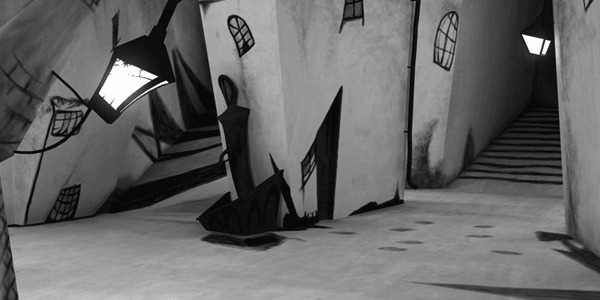
As the film progresses, the horrid landscape of Holstenwall town can be seen as a representation of the characters psyche. Due to the film being a silent one, expressionistic art is a perfect way of projecting these themes due to the lack of dialogue.
To add to this nightmare world, characters present themselves as something they are not. The narrative of Dr. Caligari is also fragmented, which feeds into the feeling that all is not right in this world. It is truly a world of paranoia and fear that Wiene presents to us.
Many film academics have pointed out how Dr. Caligari can be read as Germany’s post-war anxiety which isn’t only visible in the plot but also in the design and tone of the film. In a nutshell Dr. Caligari is a perfect example of expressionism at work in cinema and shows why it works so well in silent film.
Nosferatu (1922)
Released in 1922, F.W. Murnau’s Nosferatu: A Symphony of Horror is another prime example of expressionism at work in cinema. Murnau’s film is a retelling of Bram Stoker’s classic horror novel Dracula. Famously the characters names were changed because the production company failed to gain the rights for a film adaptation.
Heirs to Stoker’s estate sued the production company, with a judge ruling all copies of Murnau’s adaptation to be destroyed. A copy survived, leading the film to become one of cinemas most renowned pieces of work. The eerie story of the vampire Count Orlok’s (Max Schreck) voyage to find Ellen Hutter (Greta Schroder) a woman he has become obsessed with, has become one of cinemas most recognised stories.
Murnau’s approach to the expressionist style in Nosferatu is certainly more subtle than Dr. Caligari. Whilst the plot is rooted in fantasy, the landscape and setting of the Nosferatu is a scenery that the audience will recognise. It is within these realistic settings that Murnau expresses some beautiful expressionist scenes.
The surrounding forest of Count Orlok’s castle is eerie and unsettling, it doesn’t seem to contain much wildlife. When Thomas Hutter arrives at Orlok’s castle, the scene is one of dilapidation and loneliness. The castle is run down and is crooked upon the hill it sits on. Inside the grounds of the castle, shadows can be seen immersing most of the court-yard. Hutter walks through a crooked arch way that is engulfed in shadow too meet the mysterious Count Orlok who awaits on the other side.
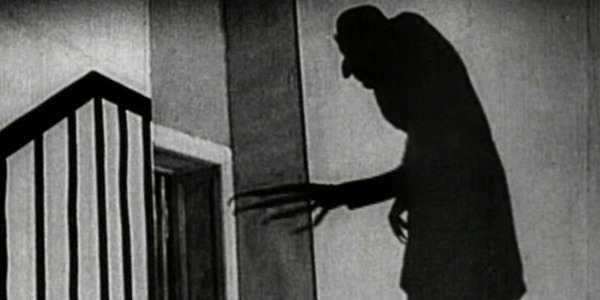
The most iconic scene in Nosferatu is a pure exercise in expressionistic art and an excellent example on the use of shadow in expressionism films. The scene that portrays the shadow of Count Orlok creeping up the stairs is a prime example of the use of shadows. It further compliments the sense of impending doom which flows throughout the film. This scene has been imitated and parodied right up until the present day but the original still has power to chill.
A post-war subtext can be found flowing through Nosferatu, as many academics have alluded too. When Count Orlok arrives in the town of Wisborg to seek out Ellen, death arrives to small town. The locals believe it is a plague that has been unleashed on them, not realizing that Count Orlok is to blame for the recent deaths. Murnau shows use scores of rats which conjure up images of disease and death, which can be seen as a metaphor for the horrors of the war.
While two very important German expressionism films are explored in this article, the country produced many more that could easily be used as an example. Fritz Lang released his seminal expressionist science-fiction epic Metropolis in 1927. The film which has been not only being hailed as one of the greatest science-fiction films of all time, but also one of Germany’s best films.
F.W. Murnau directed another classic in the genre’s canon in Faust, which is a retelling of the classic German folk tale. The Student of Prague by director Henrik Galeen is also regarded as another high point in the expressionism era of German cinema.
The Émigré
By the late 1920’s the Nazi party began to gain control of a fragile and weary Germany. Just like the character of Dr. Caligari, the Nazi party manipulated the German public into a situation not many understood. The rise of the Nazis’ caused many in the German film industry to flee to Hollywood over fears of persecution due to their religious faith.
The influx of German directors, actors and lighting technicians into American cinema caused many of its productions to take on an expressionist feel. The true nature of the influence of expressionism wouldn’t be felt for another few years. Many young Hollywood directors (with German cameramen etc.) began to display many motifs of expressionism within their films.
F.W. Murnau upon arriving in America went to work for Fox Studios. In 1927 he directed Sunrise: A Song of Two Humans, the film contained the unmistakable style of expressionism with its lavish sets and story telling The film was a massive success with critics and the public alike.
At the dawn of the 1930s the gangster genre became very popular with cinema audiences throughout America. With real life mob bosses such as Al Capone imitating movie stars and becoming celebrity, it is no wonder why the genre was so popular,
The genre produced some of cinema’s classic crime films such as Scarface and Little Caesar. Both films contain expressionist camera work to add to the dangerous and violent world these characters inhabit. While both films were directed by American directors, the influence of expressionism within them is impossible to miss.
The Legacy
The horror genre as a whole owes a debt to the German expressionist films of the 1920’s. While many of its motifs can be seen in today’s horror films such as shadows and eerie settings, the Universal horror films of the 1930’s are perhaps the best films to display the expressionist influence. Todd Browning’s Dracula contains all the hallmarks of expressionist film making. James Whale’s classic take on the Mary Shelley novel Frankenstein is another prime example of this expressionist tone that was featured in American horror films of the 1930’s.
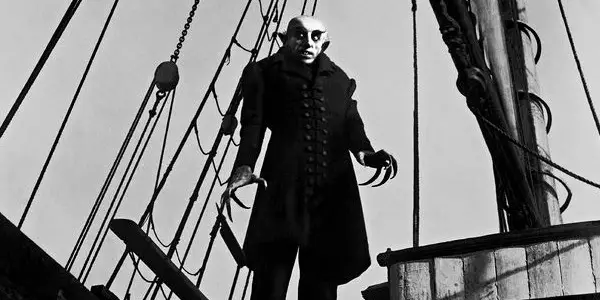
The genre of film noir began life in American cinema in the early 1940’s, its two biggest influences were expressionism and hard-boiled crime fiction. Many of the authors of hard-boiled fiction would go on to write screenplays for many of the most important films in the genre’s canon. Raymond Chandler one of hard-boiled fiction’s innovators, co-wrote the screenplay for Double Indemnity along with director Billy Wilder.
Just like German expressionism, film noir is noted for its striking visuals and atmosphere. Noir films utilise the use of shadows to add to the pessimistic view of the world it portrays, just like expressionism done decades before it. Complex characters, fragment plots and dangerous women are all motifs found in the genre of noir.
Robert Siodmak’s The Killers is a perfect example of noir at work, as the film unfolds in a flashback as told by a narrator. The film is also shot in a beautiful expressionist style which adds to the mystery at the heart of the film.
Conclusion
The importance of German expressionism on cinema is immense. From direction to the technical aspect of film making, its footprints can been seen all over cinema. One of the most celebrated films of all time contains many expressionist motifs. Orson Welles’ Citizen Kane is an ode to expressionist film making, with many of its most famous scenes displaying this and its fragmented plot.
Even today the shadow of German expressionism is still casting a shadow over film making. The films of Tim Burton are highly influenced by it, and he constantly refers back to expressionism in his work. The popular comic book films of the past decade also show signs of expressionism, Sin City being the prime example. It may be nearly a hundred years old but expressionism is still inspiring directors and screenwriters alike.
Can you think of another art movement that has had a major impact on cinema?
Does content like this matter to you?
Become a Member and support film journalism. Unlock access to all of Film Inquiry`s great articles. Join a community of like-minded readers who are passionate about cinema - get access to our private members Network, give back to independent filmmakers, and more.
Has a soft spot for Hammer Horror films and is constantly looking to further his knowledge of cinema.













